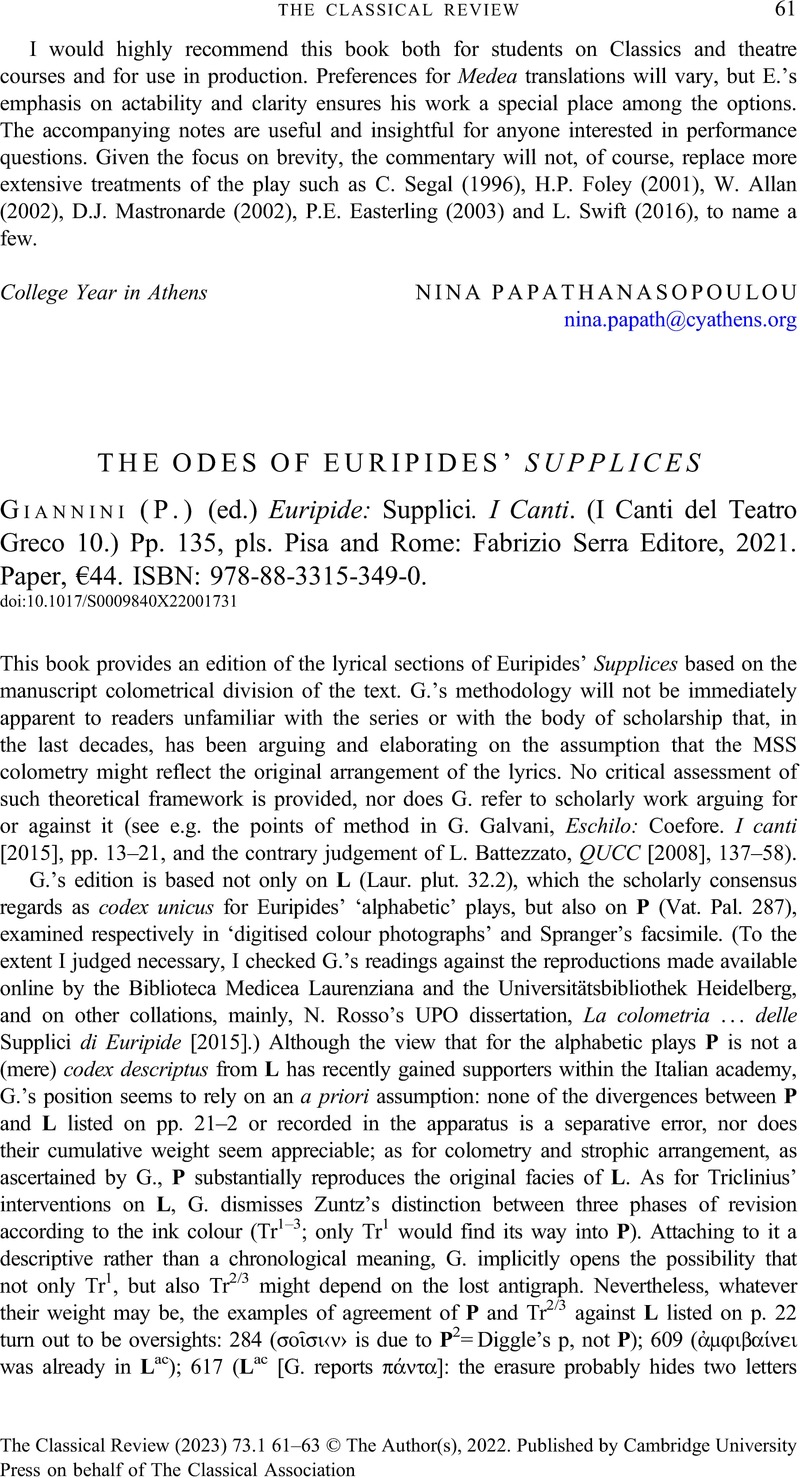No CrossRef data available.
Article contents
THE ODES OF EURIPIDES’ SUPPLICES - (P.) Giannini (ed.) Euripide: Supplici. I Canti. (I Canti del Teatro Greco 10.) Pp. 135, pls. Pisa and Rome: Fabrizio Serra Editore, 2021. Paper, €44. ISBN: 978-88-3315-349-0.
Review products
(P.) Giannini (ed.) Euripide: Supplici. I Canti. (I Canti del Teatro Greco 10.) Pp. 135, pls. Pisa and Rome: Fabrizio Serra Editore, 2021. Paper, €44. ISBN: 978-88-3315-349-0.
Published online by Cambridge University Press: 15 August 2022
Abstract
An abstract is not available for this content so a preview has been provided. Please use the Get access link above for information on how to access this content.

- Type
- Reviews
- Information
- Copyright
- Copyright © The Author(s), 2022. Published by Cambridge University Press on behalf of The Classical Association



